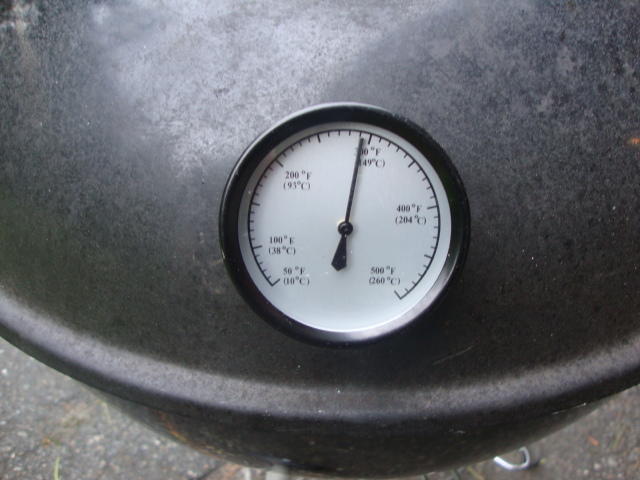fpmich
Smoking Fanatic
Been watching thread, and waiting for results.
Thank you for your tests, explanations, and results Wade. We appreciate the effort and thought put into this test.
I too, can't tell much diff between foiled and un-foiled, cooked "until done" on a good day, other than more bark on un-foiled.
On a bad day? Well........ I have them too.
Anyway, I gave up on 3-2-1, even thought it does work great. It's just another step to goodness. I now, still foil only at end of smoking, if necessary, for tenderness, and finish in oven, @ 230* to texture I like. Most of my siblings and friends have very few natural teeth, or none, to appreciate too much bark. I now smoke for 4 or 5 hours for a full slab, and finish in oven.
Smoke ring is still all the way to the bone on ribs, and the smoky flavor is still there too..
Most of my ribs are eaten a day, or week, after smoking, I send them to various people. I just tell them to heat uncovered in275*-300*
(Correction) in a 250* to 275* oven for 30-45 minutes, & apply sauce if they want, and heat them a few minutes longer at higher heat (or broiler).
I don't think it matters much, as long as you get 4 to 5 hours of good smoke pentration between 220*-275*.
As long as you get the smoke all the way through, it's good!
Competition good? Doubt it. But good enough for 99% of the world. LOL Right?
Thank you for your tests, explanations, and results Wade. We appreciate the effort and thought put into this test.
I too, can't tell much diff between foiled and un-foiled, cooked "until done" on a good day, other than more bark on un-foiled.
On a bad day? Well........ I have them too.
Anyway, I gave up on 3-2-1, even thought it does work great. It's just another step to goodness. I now, still foil only at end of smoking, if necessary, for tenderness, and finish in oven, @ 230* to texture I like. Most of my siblings and friends have very few natural teeth, or none, to appreciate too much bark. I now smoke for 4 or 5 hours for a full slab, and finish in oven.
Smoke ring is still all the way to the bone on ribs, and the smoky flavor is still there too..
Most of my ribs are eaten a day, or week, after smoking, I send them to various people. I just tell them to heat uncovered in
(Correction) in a 250* to 275* oven for 30-45 minutes, & apply sauce if they want, and heat them a few minutes longer at higher heat (or broiler).
I don't think it matters much, as long as you get 4 to 5 hours of good smoke pentration between 220*-275*.
As long as you get the smoke all the way through, it's good!
Competition good? Doubt it. But good enough for 99% of the world. LOL Right?
Last edited:








